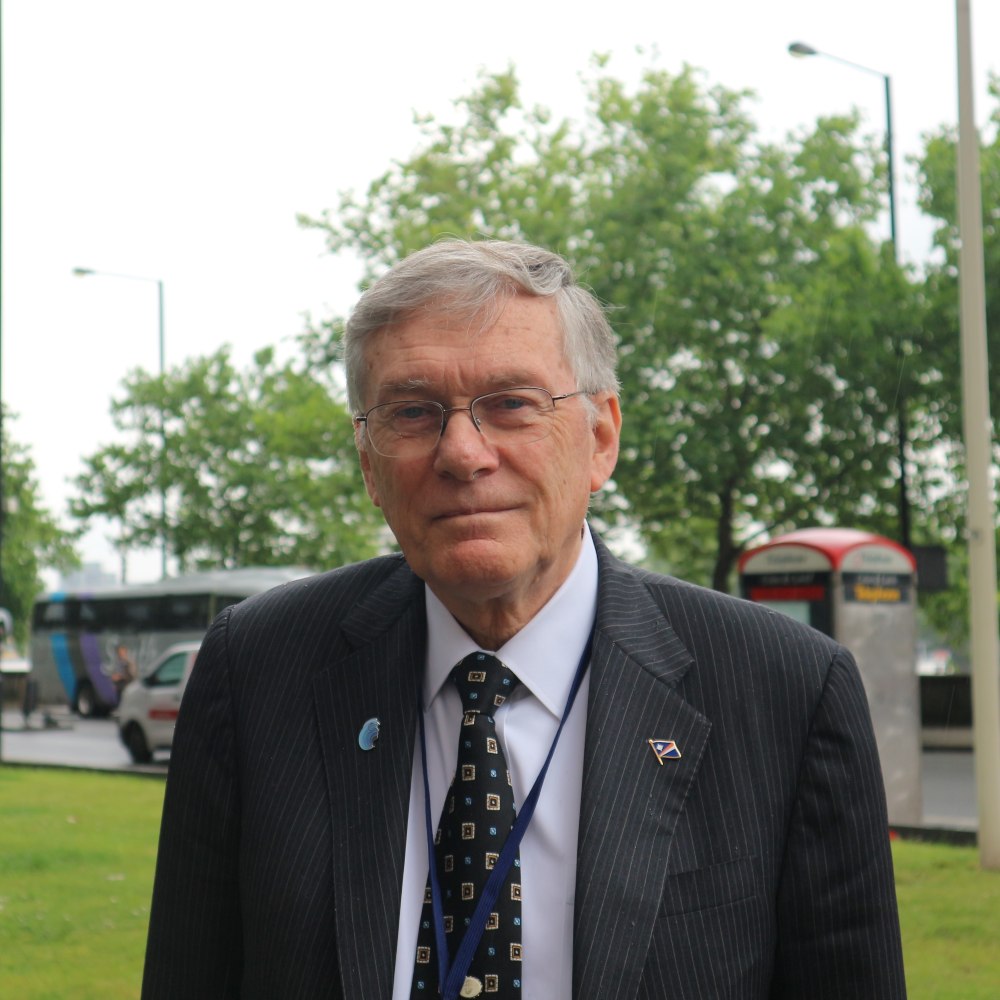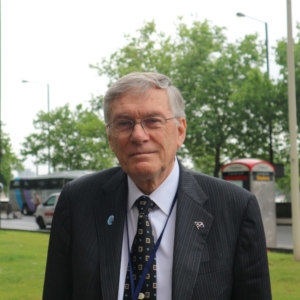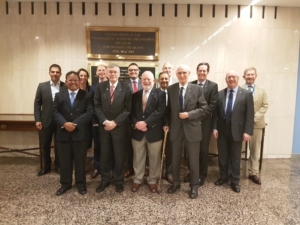
 Catching Tom Heinan at the International Maritime Organization (IMO) during the 101st session of the Maritime Safety Committee (MSC) this June seems a very appropriate way to mark the end of a long career spent at sea, in shipyards, boardrooms, and countless IMO meetings. We met with him over a quick lunch between sessions during his final professional stay in London as our Senior Vice President, Maritime Administration to ask him about his career and retirement.
Catching Tom Heinan at the International Maritime Organization (IMO) during the 101st session of the Maritime Safety Committee (MSC) this June seems a very appropriate way to mark the end of a long career spent at sea, in shipyards, boardrooms, and countless IMO meetings. We met with him over a quick lunch between sessions during his final professional stay in London as our Senior Vice President, Maritime Administration to ask him about his career and retirement.
For 25 years, Tom has played a key role at the IMO, shaping legislation and bringing his practical and commercial expertise to the table. As part of the Marshall Islands delegation at IMO, Tom has brought his analysis and interpretation to the team, helping unravel the complexities of the IMO’s environmental, security, and safety codes. Tom has helped the Marshall Islands amend its laws and promulgate new legislation to maintain its role as a maritime industry leader, as well as provide input into the numerous Marine Notices and Guidelines issued by the Maritime Administrator.
As Tom puts it: “At IMO, I catch the fish and turn them over to the team who clean and cook them.”

From left to right: (Back Row) Thanos Theocharis, Mary Ann Adams, Robert Gale, Evan Curt, Jasbir Jaspal, Charles McHardy, Nick Makar, John Tavener, Peter Cook; (Front Row) Baron Bigler, Captain Tom Heinan, Dan Sheehan, and Captain David Bruce.
In-depth role at IMO
During Tom’s tenure with IRI he has been involved in many of the key legislative moments at the IMO. These include the introduction of the International Safety Management (ISM) and International Ship and Port Facility Security (ISPS) Codes, amendments to the International Convention on Standards of Training, Certification and Watchkeeping for Seafarers (STCW), as well as the more recent ballast water management, ship recycling, carbon emissions, and sulphur cap developments.
However, it was the introduction of the vessel Long Range Tracking and Identification (LRIT) system which Tom Heinan is particularly proud. Spurred by the need for additional maritime security in the wake of the 9/11 attacks, countries needed a way of identifying and monitoring shipping 1,000 miles offshore and in international waters. Tom met with technology company Pole Star and brought their technology to the attention of the IMO’s MSC, who “took the ball and ran with it.” Today, LRIT underpins countless national tracking arrangements. Containing data including vessel name, IMO number, course, speed, and proximity to the nearest coast, it is a regulatory requirement that every ship over 300 gross tons (GT) sends a report every six hours to the national data centres.
Stepping up
Tom Heinan joined IRI in 1994 when the company was providing administrative and technical support to two ship registries. The decision in 2000 to focus solely on the Marshall Islands brought new challenges and a laser like focus on quality.
“I remember being called into the conference room and being told that I’d lead the regulatory side. We had good reliable clients that needed to move ships over to the Marshall Islands. At that time it was just me on the regulatory side and we knew that we needed to diversify and decentralize. Today, we’ve got a system to which no other flag administration can really compare, with 28 worldwide offices representing over 400 full-time employees, and also 300 contracted nautical inspectors around the world.”
Before IMO
But only half of Tom Heinan’s maritime career has been spent pouring over IMO documents. Before joining the IRI team, Tom served as the Assistant Secretary for Marine Transportation at the Washington State Department for Transportation. This role involved being the chief executive officer for the largest public marine ferry transit system in the United States. According to Tom, this was “a very political role.” He took over amid the renovation of a series of large passenger car ferries and saw that the contracts were very much in favor of the shipyard and did not balance the needs of the State of Washington. He initiated a complete rehaul of the contracts to ensure the interests of the State were well represented.
Tom’s experience of dealing with sharp-elbowed shipyards had been gained during his 15 years with W&C Holdings, Inc. and Manhattan Holdings, Inc. which were part of Stolt- Nielsen. Tom not only bought and managed tugs and barges, but also became involved in the cruise business in the 1980s, leading a project to build three sail powered passenger ships in Le Havre, France. At the time, the three $100 million ships were groundbreaking and were the first computerized large passenger sail vessels ever launched. For Tom, this meant six years of commuting between New York and Le Havre supervising their construction. The vessels are still sailing in the Caribbean and South Pacific.
Early days at sea
Tom was born in Milwaukee, Wisconsin and claims to have never seen a ship before he went to sea. Inspired by one of his father’s business associates to apply for the US Merchant Marine Academy at Kings Point, he first went to sea in 1961 as a cadet on board a 1930s era C3 general cargo ship on the tailwind of a hurricane going to South Africa. After graduating in 1965 he quickly progressed through the ranks and within three years had obtained his Masters license. Sailing with Marine Transport Lines & Farrell Lines, he was heavily involved with the movement of American supplies during the Vietnam War as well as cargo ships into West Africa.
Coming ashore in the early 1970s, he met his wife Kathleen and took a position in Greenwich, Connecticut with Stolt-Nielsen. But on his first day with the company, he was told that he was to be posted to Singapore to manage the company’s marine operations there. “I was called into the president’s office who said, ‘we’ve got a problem with the tugs and barges there and you’re the only one with any experience.’” So it was immediately off to Singapore for three years for Tom and his wife. They went on to have two children together and today live outside our headquarters in the Washington, DC area.
Tom has been an inspiration to countless IRI executives and team members. He has always taken the time to share his huge wealth of experience with colleagues and clients alike. A true icon of our industry, he will be sorely missed and we wish him health and happiness in his retirement.



